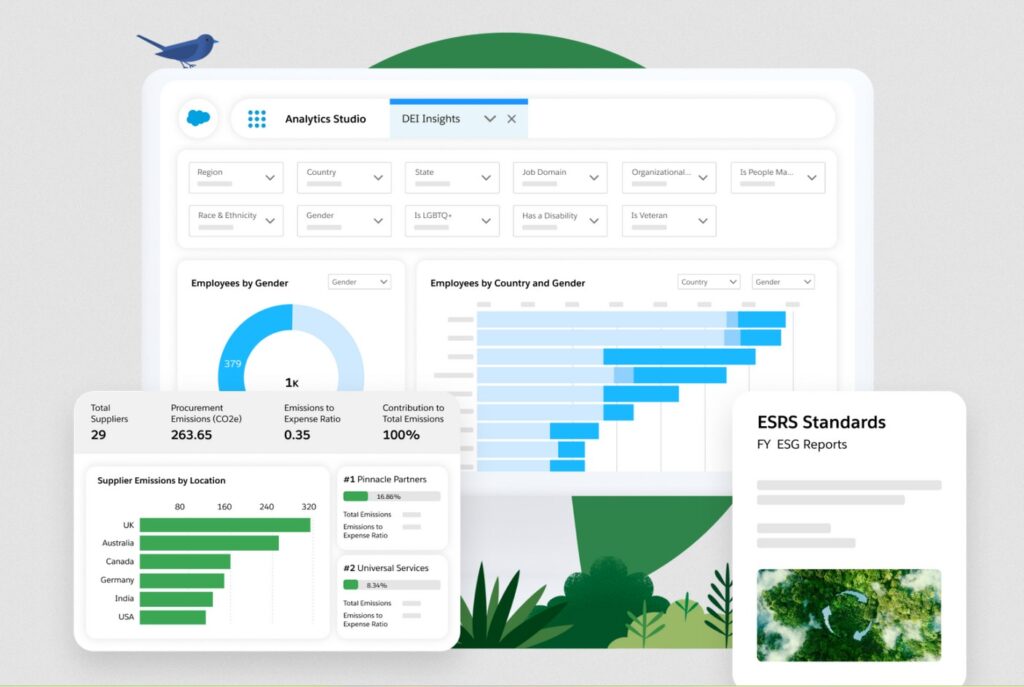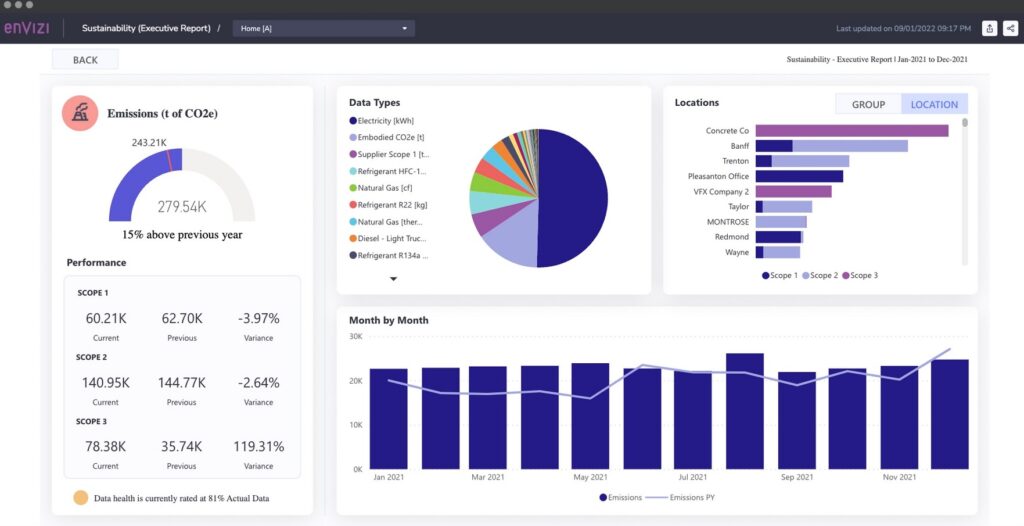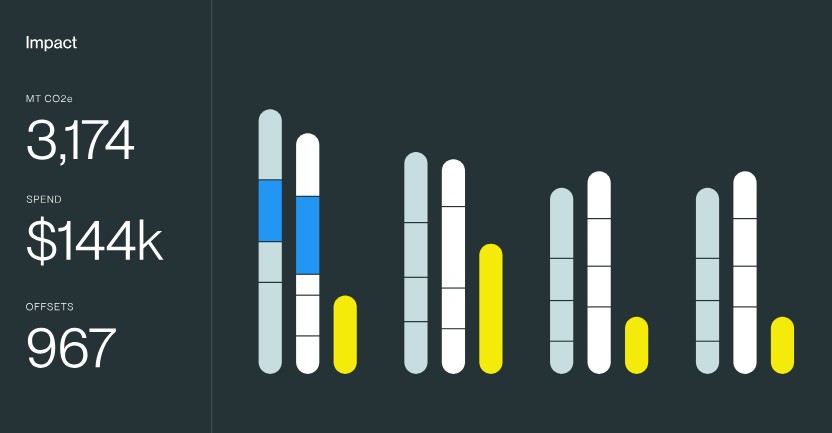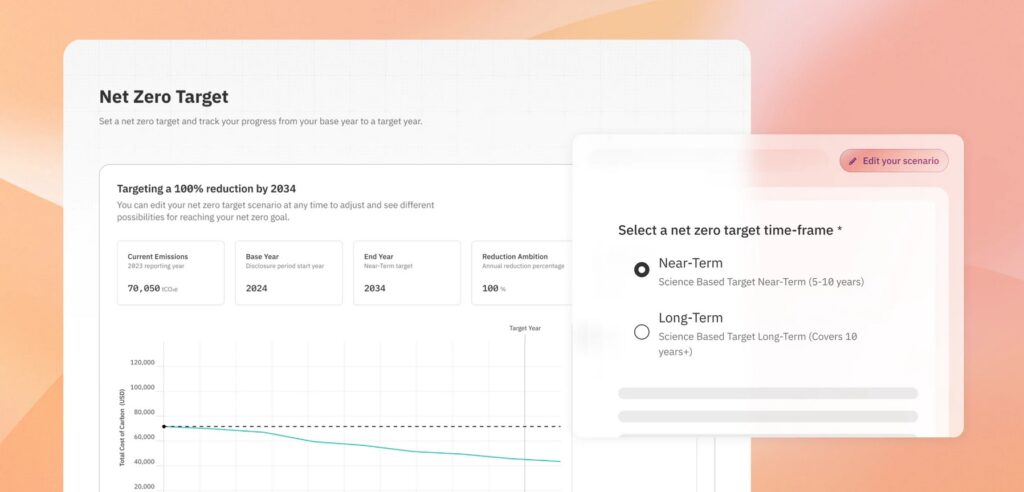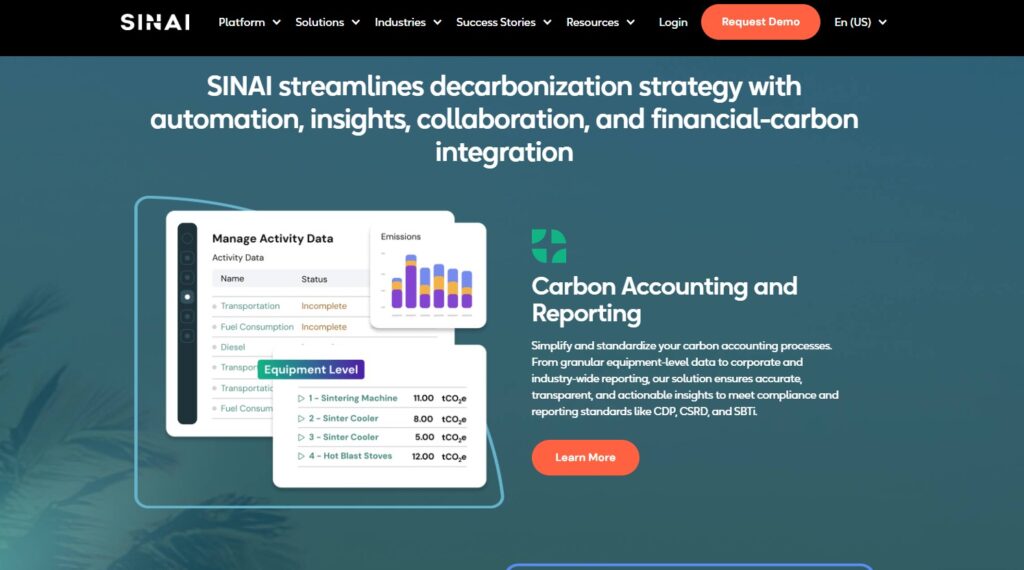A changing climate is impacting people, countries, and businesses in a big way. Businesses, in particular, stand to lose a lot by way of direct impact from natural disasters as well as indirect impact in the form of employee health, supply chain disruptions, and more. To avoid these consequences, businesses are being urged by governments to reduce their carbon footprint and to create sustainable business operations. Some countries even mandate businesses to follow certain environment-friendly policies and offer credits for doing so.
In light of these regulations, it becomes important to track the carbon emissions of each business, as this is seen as one of the primary causes of climate change. The good news is there are many software platforms available today to track carbon emissions and reduce them. In this article, let’s look at the eight best platforms to help you decide the one for your needs.
What is Carbon Management Software?
Carbon management software is a suite of tools that measure the Greenhouse Gas (GHG) emissions of businesses. These platforms collect and analyze data from different sources like energy use, direct emissions, supply chain, product emissions, and more. It uses this data to generate appropriate reports that meet regulatory requirements.
Businesses can also use these reports to plan their future operations and reduce their overall impact on the environment. Additionally, it provides tangible numbers that can be communicated to stakeholders to keep everyone aware of the company’s goals towards protecting the environment.
Due to these multiple benefits, many companies are turning to carbon management software to improve their compliance with green standards and reduce their negative footprint on the environment.
Below are the best carbon management software that can help businesses meet their goals.
1. Salesforce Net Zero Cloud
Salesforce Net Zero Cloud is an ESG software that enables companies to manage their environmental initiatives and create reports on their progress. It gathers and analyzes data from many sources like suppliers, partners, and the rest of the value chain. It even automates reporting through its Agentforce capabilities.
Source: Salesforce
Key Features
- Automates ESG reporting complying with frameworks like CSRD, GRI, CDP, and more.
- Analyzes complex data from utility bills, business travel, fleet, and more to calculate carbon emissions as accurately as possible.
- Provides the insights for informed decision-making.
- Stores and manages all ESG in a single location, and connects them to the Salesforce ecosystem for comprehensive views.
- Offers support and guidance to maximize your returns.
Pros:
- Improves decision-making.
- Simplifies reporting and compliance.
- Supports communication with stakeholders.
- Integrates well with the larger Salesforce ecosystem.
Cons:
- Complex setup.
- Customization requires technical expertise.
2. Plan A
Plan A is a popular carbon management and ESG platform that accurately measures your carbon footprint. It analyzes emissions across the different established scopes and this can be further categorized across departments, branches, or any other dimension to get the insights you need.
Source: Plan A
Key Features
- It works with climate change and science experts to align your sustainability goals with emerging scientific standards. As a result, you’re better prepared to adopt scientific breakthroughs.
- Handles carbon and CSRD reporting.
- Makes it easy to comply with existing regulations.
- Helps with setting targets and achieving decarbonization.
- Collects and analyzes data from multiple sources for comprehensive insights.
Pros:
- Automates emission tracking and reporting.
- Meets regulatory requirements.
- Identifies high-impact areas for better focus and planning.
- Intuitive dashboards for easy understanding.
Cons:
- Limited customization for industry-specific needs.
- Training is required to completely leverage this platform.
3. IBM Envizi
IBM Envizi is a robust tool for gathering sustainability data and analyzing it against established targets to identify gaps in ESG compliance. It also helps to bridge the gaps and manage risks better.
Source: IBM
Key Features
- Combines powerful analytics and reporting, helping you stay compliant with all leading environmental regulations.
- Builds a single system of record for data capture and transformation.
- Uses AI to manage large volumes of data.
- Compares the actual results with sustainability goals and helps make up the shortcomings.
- Supports multiple reporting frameworks.
Pros:
- Supports third-party assessments with audit-ready data.
- Automates complex calculations for improved accuracy.
- Modular, scalable, and flexible.
- Enables you to prioritize investments and resources.
Cons:
- Complex to set up.
- Requires technical expertise to leverage its features.
4. Normative
Normative is another leading carbon accounting and reduction platform that helps businesses to measure and analyze emissions across scopes 1,2, and 3. It uses advanced technology and leverages the world’s largest sustainability research database to provide insights into your operations’ impact on the environment.
Source: Normative
Key Features
- Calculates carbon emissions across complex value chains.
- Simplifies compliance with frameworks like CSRD and CDP.
- Helps implement reduction strategies.
- Continuously collects and analyzes data for collaboration.
- Combines AI insights with human expertise.
Pros:
- Reduces manual effort with comprehensive automations.
- Strong focus on the often overlooked scope 3 emissions.
- Works well across multiple frameworks.
- Provides precise actionable insights.
Cons:
- Manual inputs may be needed in some scenarios.
- Limited integration options.
5. Sustain.Life
Sustain.Life, now a part of Workiva, is a carbon accounting platform that calculates your carbon footprint using scientific methods and frameworks. This sustainability management software enables you to comply with different environmental frameworks and simplify climate disclosures.
Source: Sustain.Life
Key Features
- Provides actionable insights with your emissions and environmental data.
- Helps build a plan that reduces carbon footprint across the entire organization.
- Streamlines sustainability reporting with its built-in templates.
- Offers comprehensive resources backed by 24/7 support.
- It comes with customizable dashboards and visual analytics to make sense of the data.
Pros:
- Intuitive interface.
- Scalable, and works well for all industries, including those with complex supply chains.
- Identifies opportunities to reduce costs without impacting efficiency.
- Encourages proactive compliance.
Cons:
- Lacks advanced forecasting capabilities.
- Customization is limited in reporting.
6. Persefoni
Persefoni is a Climate Management and Accounting Platform (CMAP) that measures and manages your organization’s carbon emissions. It simplifies the process of reporting while helping build and execute decarbonization plans.
Dashboard showing net zero target and how to track your progress for carbon management from Persefoni.
Source: Persefoni
Key Features
- Tracks carbon emissions for scopes 1,2, and 3 for businesses of all sizes and industries.
- Creates GHG reports to meet the requirements of all leading environmental regulations.
- Supports advanced decarbonization like net-zero targeting, reduction modeling, and more.
- Leverages advanced AI capabilities.
- Encourages stakeholder communication.
Pros:
- Creates finance-grade data for emissions.
- Supports informed decision-making.
- Intuitive workflows.
- Scalable.
Cons:
- Expensive.
- Integration can be time-consuming.
7. Microsoft Sustainability Manager
This tool is a part of the Microsoft Cloud for Sustainability, and helps organizations record and reduces their environmental impact. It uses AI and advanced data collection processes to gain visibility into your operations, so you can take the necessary steps to reduce your carbon footprint.
Source: Microsoft
Key Features
- Uses Copilot for faster analytics and reporting.
- Continuously monitors your sustainability activities.
- Automates data connections to provide a comprehensive picture.
- Calculates emissions accurately to provide meaningful insights.
- Breaks down data silos using the Microsoft Cloud for Sustainability data model.
Pros:
- Tracks wastage at the granular level.
- Exports collected data to Azure Data Lake for advanced analytics.
- Tracks goals against performance to identify gaps.
- Offers data trails for ESG audits.
Cons:
- Too complex, especially for small businesses.
- Limited customization.
8. SINAI Technologies
This is an integrated financial planning and carbon management tool that helps your organization reach net-zero targets using science-based principles and guidelines. It condenses data into metrics supported by the different regulations, making it easy to understand the state of your operations at any point in time.
Source: SINAI
Key Features
- Identifies cost-effective decarbonization strategies that align with your organization’s goals.
- Quantifies performance and compares them against the established targets to identify gaps.
- Uses scenario and sensitivity analysis to build the right strategies.
- Automates the tracking and management of all GHG inventories.
- Measures and reports scope 1,2, and 3 emissions.
Pros:
- Comprehensive approach to decarbonization.
- Customizable strategies and plans.
- Helps meet regulatory compliance.
- Finds cost-effective solutions.
Cons:
- Requires a certain level of expertise.
- Limited integration with existing systems.
Selecting the Right Carbon Management Software
There is no one size fits all solution when it comes to carbon management because every industry has its unique environmental footprint. Hence, it’s important to select a tool that works best for you.
One of the first considerations is the company size and the industry in which you operate. Typically, large organizations with global operations may require advanced tools like IBM Envizi or SINAI Technologies to track Scope 1, 2, and 3 emissions across multiple locations. Smaller businesses or startups, on the other hand, may prefer a simpler, user-friendly platform like Sustain.Life or Plan A, as they offer carbon tracking features without overwhelming complexity.
Another significant factor is the regulations that you must comply with. Organizations operating in regions with strict environmental laws, like the EU or California, need software that aligns with frameworks like the GHG Protocol, TCFD, or CSRD. In such situations, platforms like Persefoni and Normative help with compliance reporting. They even have features like automated calculations and audit-ready documentation to simplify regulatory adherence.
Data integration and automation capabilities also matter when choosing a platform. Businesses already using Salesforce, Microsoft, or SAP can opt for solutions like Salesforce Net Zero Cloud or Microsoft Sustainability Manager, as they seamlessly integrate with existing systems.
Scalability and flexibility are overlooked factors, but they can have a big impact on your growing organization. In such cases, you need a tool that can adapt to increasing data volumes and expanded reporting needs. Cloud-based solutions with modular features, like Plan A and SINAI Technologies, are good choices as they allow businesses to start with basic tracking and expand functionalities over time.
Finally, cost and ROI should be factored into the decision. While some platforms offer free trials or tiered pricing, others require considerable upfront investment. Businesses must weigh the cost against potential benefits, such as energy savings, improved compliance, and enhanced sustainability reporting. Investing in the right tool can lead to long-term financial and environmental benefits, making it a strategic decision rather than just a compliance necessity.
Final Thoughts
In all, carbon management software is an important investment as it helps businesses track, reduce, and report their emissions. The increasing regulatory pressure and stakeholder expectations make it essential for companies to track their emissions and reduce them over time. In this article, we discussed the top carbon management tools that can provide complete control and visibility into your carbon footprint, so you can take the appropriate steps to curb them. As climate concerns continue to grow, businesses that prioritize carbon tracking today will be better positioned for success in a future low-carbon economy.

